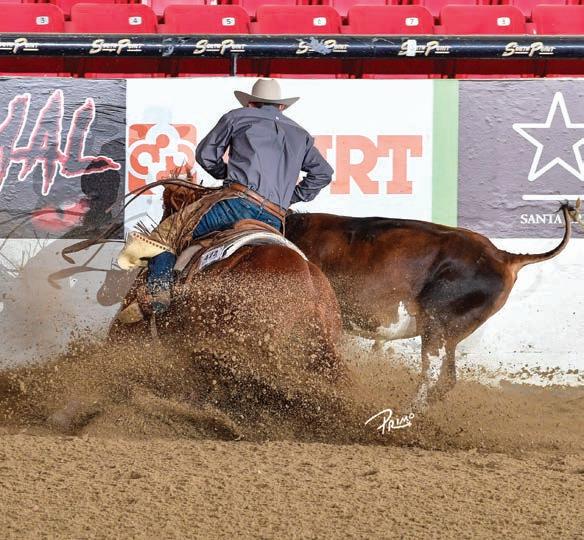
2 minute read
From the Judge’s Chair

Everyone has their strengths and weakness when it comes to showing reined cow horse. Reading a cow accurately is almost a must when competing to win at the National Reined Cow Horse Association premier events or even at our weekend shows. Sometimes luck is involved by drawing the perfect cow to work, but when that doesn’t happen the showman that reads the cow the best has a definiteadvantage.
In the herd work, most people pick the cattle they want to work before they walk down to the herd. They have watched cattle when the herd was settled and usually watch each rider before them cut so they know which cattle have been used and which are still fresh.Having a good idea about the behavior of cattle to be cut goes a long way toward earning a good score.
Cutting in the center of the pen and staying even on both sides of the cow are a must for credit.How far to go by the cow to turn and control him is a part of reading a cow accurately.Go too far, you might lose working advantage; don’t go far enough, the cow might not turn so your help or the fence have to turn him—no credit there.
The exhibitors that read the cow the best know when they can play offense and when to play defense.If the cow is aggressively trying to get back to airing your horse out on the fence and have a tough time finishing in control on the circles.
The No.1 priority when judging the cow work is: Did the horse have position and control during the entire cow work? If they did, and also had at least an average to good amount of degree of difficulty, they should earn a good score.Reading the cow accurately allows the exhibitor to be consistent throughout the work and finish strong.Remember, using good judgment on a cow always gives you a fighting chance.
Until Next Time,

KATE BRADLEY BYARS
A horse and rider’s position on a cow at the start of a run will change the overall run score and outcome.
the herd, it’s time to be on the defensive. If the animal lets you control him in the middle of the pen, it’s time to play offense.
When the cow enters the arena during the cow work the experienced showman starts sizing up the animal. Some cattle head better than others, some are numb and don’t head at all, and some are a combination of both.The idea, while boxing, is to get on both sides of the cow to stop and turn it so when you get to the head on the fence the animal will honor the horse and turn. How long the animal is boxed has a lot to do with how the rest of the fence work plays out.Boxing too long takes too much juice out of the cow and the finish is usually weakened.Don’t box enough on a numb, active animal and you risk Bill Enk NRCHA Director of Judges










